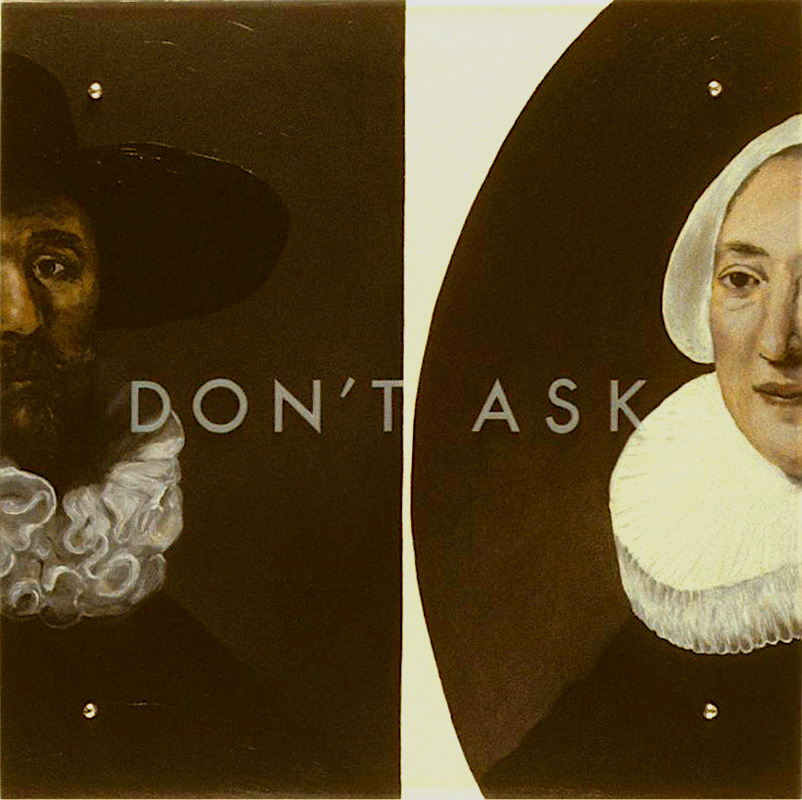
After (Left) Rembrandt, Young woman in bed, 1647
(Right) Rembrandt, Bathsheba with King David’s letter, 1654
This painting, based on two different paintings by Rembrandt, refers directly to the two women represented: Geertge Dircx on the left and Hendrickje Stoffels on the right. Both were intimately involved with the artist. Dircx was hired in 1641 as a nursemaid for the artist’s son Titus. After Titus’ mother, Saskia, died in 1642, Rembrandt promised to marry Geertge. They began an affair, which ended when he dropped her for Stoffels, who was hired in 1648 as a housemaid. Dircx sued Rembrandt for breech of promise and won in court, but he evaded the settlement by committing her to an insane asylum where she remained for five years, dying shortly after her release. Stoffels, during the period she posed for Bathsheba, was subjected to the public humiliation of an excommunication hearing for the sin of living as Rembrandt’s “whore.”

After Rembrandt van Rijn (Dutch, 1606-1669) Self-Portrait, 1658

After Hans Holbein the Younger, Sir Thomas More, 1527
TEXT: Forget about it. Forget about it?

After:
Left, Rembrandt van Rijn, Dirck Jansz. Pesser, 1634
Right, Rembrandt van Rijn, Haesje Jocobsdr. Van Cleyburg